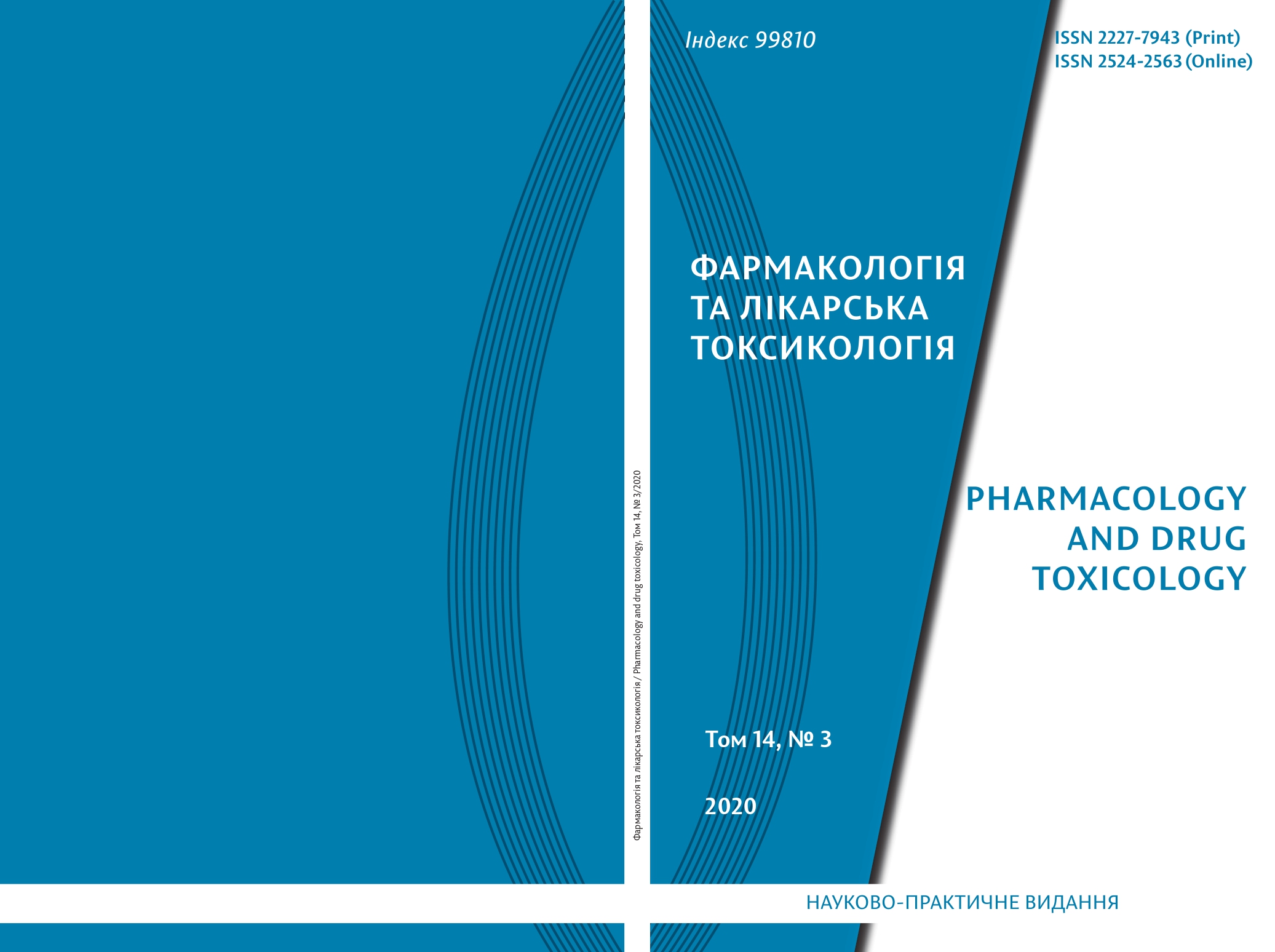Abstract
Pain syndrome is a manifestation of many pathological processes and a cause of a decrease in the patient's quality of life. Medicines with pronounced analgesic activity are widely used in clinical practice, however, they have a number of side effects that are life-threatening for patients. In this regard, the search for new effective analgesic agents is an important task of pharmacology. Promising in this regard are herbal remedies, in particular extracts of tansy.
The object of this study was a thick extract of tansy flowers (TETF), obtained at the Department of Botany of the National University of Pharmacy and standardized by the amount of flavonoids (3,69 % in terms of luteolin) and the amount of hydroxycinnamic acids (16,88 % in terms of chlorogenic acid).
The aim was an experimental study of the analgesic activity of a thick extract of tansy flowers.
Two models were used to study the analgesic activity of TETF: thermal stimulation («Hot plate») reproduced on white laboratory male rats and chemical irritation («Acetic acid cramps») reproduced on white outbred male mice.
The results of the study showed that on the hot plate model, TETF exhibits moderate but persistent analgesic activity at the levels of 26,1 %, 38,2 % and 38,7 %, respectively, at the 1 h, 2 h and 3 h after administration, while significantly (p < 0,05) inferior to the comparison drugs diclofenac sodium with analgesic activity of 40,0 %, 79,8 % and 54,3 % respectively, and metamizole sodium with analgesic activity of 26,5 %, 74,0 % and 64,1 % respectively. On the «Аcetic acid cramps» model, TETF exhibits moderate analgesic activity at the level of 58,4 %, slightly inferior (p > 0,05) to the comparison drug diclofenac sodium (97,5 %).
Thus, it was found that TETF characterized by moderate antinociceptive activity in experimental models with both peripheral and central mechanisms of a pain reaction formation. In terms of the strength of analgesic effect, TETF is inferior to the comparison drugs NSAID diclofenac sodium and analgesicantipyretic metamizole sodium. The data obtained are an experimental substantiation for the further study of TETF as a promising analgesic.
